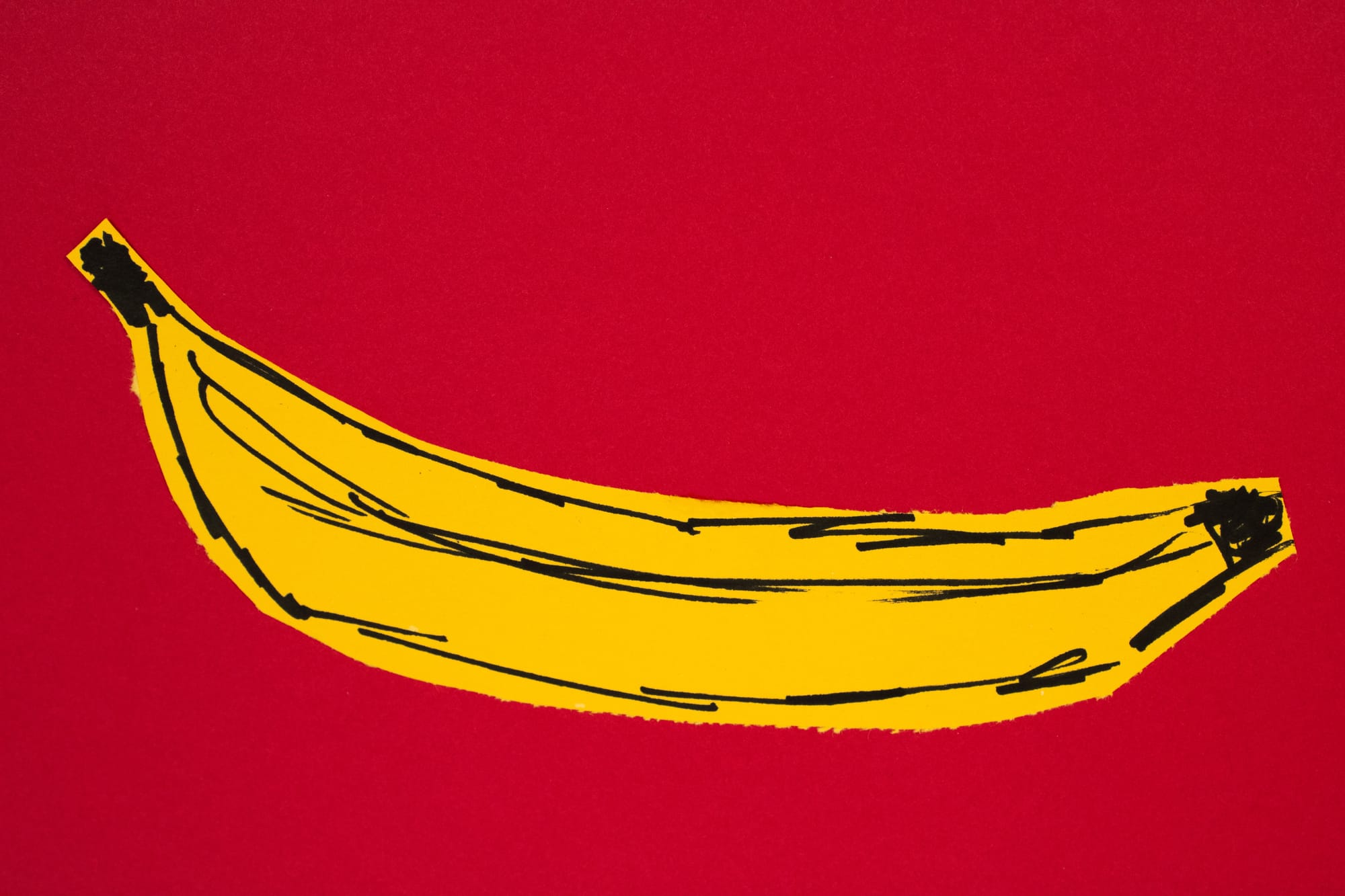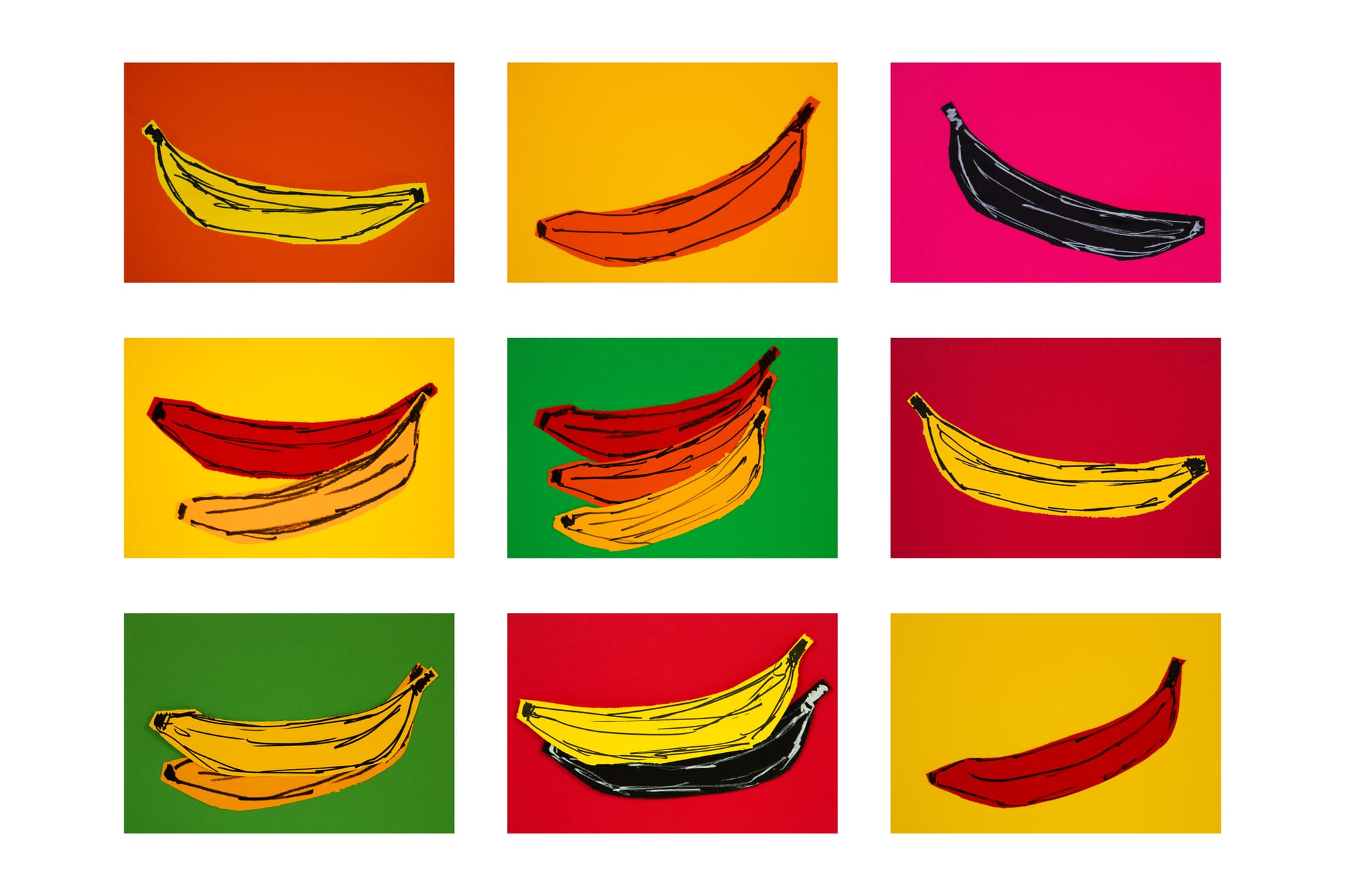A Brief History of Shade
The Oxford English Dictionary has dozens and dozens of definitions of shade. I try to understand a few of them.

There are some words which are so common, and used in such a wide variety of uses, we don’t usually take a pause to ponder its etymology.
For example, last week I noticed that I switched between using the words “tones” and “shades” when referring to various gradations of color. Later that day, I was reading a 19th century article about interior design, and in a perfectly normal sense, it mentioned “window shades”.
For some reason I stopped, and realized that I had absolutely no idea how the word for gradations of colors is related to the word for the absence of light.
Shady Words
All quoted biblical verses are referred to by their Hebrew Bible chapter & verse
Some light research had me quickly clarify a few points:
Firstly, “shade” is connected to the word “shadow”. It’s not a surprise in the slightest, but I figured that I should probably mention it. The shade refers to the area, the shadow refers to the resulting darkened shape.
Second, the various evolutions in metaphor are logical as well. Shade becomes synonymous with “cool” (temperature) because it is cooler in the shade, and “protection” because it prevents exposure to the sun. Jonah 4:6 makes a direct connection between "shade" and "protection" by using some fun alliterative wordplay.
Third, I’m referring to the concepts of “shade” and “shadow”, not only the English words. It’s not solely an English phenomenon that we refer to gradations of colors as “shades”. The English words are from German, Dutch, Middle English, and find their roots in various Nordic languages, but I'm not really going to delve into their histories.
Latin and the Romance languages not only use the same root word (umbra) to refer to both shade and shadow, but also in referring to both absence of light and gradation of color.
In English, the word “shade” is frequently associated with the dead and ghosts, and that came from Latin as well. All of these came from the Greek σκιά (skia), which already had all these aforementioned meanings, as well as being the connection to painting and drawing.
A fun linguistic pairing
The Italian word “umbrella” is the diminutive version of the word “shade”, so it’s like a little personal shade and protection. The French word for the same item is “parasol”. This means that both words have their roots in their relation to the sun, not rain.
Shade and the Dead
One of the connections mentioned as an early relation was Psalm 23:4, which was referenced by 1990s one-hit wonder Coolio, namely (rough common English translation):
“Though I walk through the valley of the shadow of death, I fear no evil, because you are with me.”
The original Hebrew word for the underlined phrase is צלמות (tsal-mavet) which is translated into Greek as σκιᾶς θανάτου, or literally, “the shadow of death”, and Latin as “umbræ mortis”, with the same translation.
The only potential problem with the translation is that it treats the single word צלמות (tsal-mavet) as a compound word comprised of the words צל (tsal / shade) and מות (mavet / death).
A more accurate translation of the word itself is related to Semitic root 𐩼𐩡𐩣 (ẓ-l-m), with cognates meaning “darkness” in Arabic, Amharic, Ugaritic, Ge’ez, Akkadian, Syriac, Sabaic, Qatabanic, Mehri, Safaitic, and Minaic, to name a few. The root word for “shade” is 𐩼𐩡𐩡 (ẓ-l-l) in a similarly long list of languages.
Is there some relationship between the words? Most likely. The words are a single letter apart like L and M. (As an aside, I learned how to write ancient Sabaic for fun this past summer, and will take any opportunity to use it.)
While "valley of darkness" may be the correct translation, "valley of the shadow of death" sounds a lot better during a eulogy.
Spirits, antiphrasis and “throwing shade”
While darkness is related to death, in later Biblical Hebrew, Sheol was the way to describe the netherworld, and only occasionally (not always) was explicitly associated with darkness. It also wasn’t necessarily synonymous with the modern concept of “hell”. It was the place where souls go after death, without qualifying anything about sin or repentance. More often, it is described as a pit or grave, which is a dark place, so we forge a mental association.
Proverbs 9:18 and other Biblical verses make a direct connection between some sort of spirits of the dead (refaim) living in Sheol. While I am not certain of the etymology of that word, it has nothing to do with darkness or shade. I do know that I used to go to a great wine restaurant on a street whose name is translated as "valley of the spirits".
One possibility is that it could be an antiphrasis, as it shares a root with the verb “to heal” or “to repair”. In an antiphrasis, the reader or listener knows that the true meaning is the opposite of the stated one.
This is similar to the most recent definition for the word “shade”, according to the OED. The Oxford English Dictionary credits the Ballroom scene of Harlem in the 1980s with the inclusion of the slang “throwing shade”.
There is no better definition than the quote cited there from “Paris is Burning” (1990), the documentary about the scene:
Shade is I don't tell you you're ugly, but I don't have to tell you because you know you're ugly and that's shade.
In other words – “Contempt, disapproval, or disrespect, esp. when expressed obliquely.”
The main difference between the general use of antiphrasis and throwing shade is that antiphrasis is typically a kinder way to say a negative thing, whereas shade is described as an indirect way to convey harsh negativity.
Hadestown
As I wrote earlier, one of the meanings of “shade” is “spirit of the dead”. For example, Dante saw ombra (shades) during his journey to the Underworld. Was this description based on the mistranslation of Psalm 23? No.
The Greek equivalent of Sheol was Hades, and Dante was far from the first to visit Hadestown.
In book 11 of Homer’s Odyssey, while describing the spirits of the dead, he used the word ψυχαὶ, (yuxai), from the word “ψυχάζω” meaning “to refresh oneself in the shade”, an antiphrasis to describe people who are buried. It is only one more small metaphorical jump to describe the spirits as “shades”.
But there is also another, slightly earlier, Homeric linguistic connection, one where the root σκιά (skia) was used. In book 10, when Circe is instructing him to visit Hadestown:
Son of Laertes, sprung from Zeus, Odysseus of many devices, abide ye now no longer in my house against your will; but you must first complete another journey, and come to the house of Hades and dread Persephone, to seek soothsaying of the spirit of Theban Teiresias, the blind seer, whose mind abides steadfast. To him even in death Persephone has granted reason, that he alone should have understanding; but the others flit about as shadows. (σκιαὶ ἀίσσουσιν)
Light and darkness has been connected metaphorically to wisdom and ignorance. The shadows (or shades) here are simply people for whom an absence of light exists within their minds, hence they are flitting around in the shade.
Peter Pan
But I do believe that there is an additional route to understanding the history of shade and shadows. In the first act of the play “Peter Pan” (1904) and subsequently in the second chapter of the book “Peter and Wendy” (1911), we encounter a fantastical sort of encounter which sets the stage for the magical realism to come.
We learn that Nana (the nanny-dog) had chased an unknown boy out the window and then we witness an exchange between Mr. and Mrs. Darling, about how the boy left his shadow behind, and Mrs. Darling rolled it up and placed it in a drawer. In the play, Mr. Darling makes a sly remark about heading to the British Museum and having the shadow appraised.
When the boy, whom we learn to be the protagonist Peter Pan, returns, he discovers the shadow but tries to reattach it using soap, to no success. Wendy offers to reattach it by sewing it back on, and upon finishing notes that it is a bit wrinkled, and she laments not ironing it.
Upon the successful reattachment, Peter dances around and the shadow moves in synchrony. He feels complete. Homer may have even said that he was “flitting” around.
The playwright and author J.M. Barrie whimsically treats a shadow as a physical reality, not simply as a darkened shape due to an object between the light source and the projection of the shadow. While it may make an early twentieth century audience giggle, such a metaphorical meaning can be traced back to the Hebrew original of Genesis 1.
Genesis
In a set of verses riddled with a theological quagmire that requires some careful explanation, the first half of Genesis 1:26 is
“And God said, Let us create man בְּצַלְמֵ֖נוּ כִּדְמוּתֵ֑נוּ - in our image, in our likeness.”
There are two words used here, one, a word with the same root of shadow (ẓ-l-l), and the root 𐩵𐩣𐩺 (d-m-y) which means “like” (as in likeness / similar to) in several Semitic languages, including Hebrew.
But what is the first word? It’s the same word as “statue” or “idol”, as well as sharing the same root as modern Hebrew words for “camera” and “photograph”. In both Greek and Latin, it’s translated as “in our image; “κατ᾿ εἰκόνα ἡμετέραν” and “ad imaginem … nostram”.
An Imperfect Copy
The same noun pairing is used later, albeit reversed, when describing the birth of Seth to Adam in Genesis 5:3, “in [Adam]’s likeness and in [Adam]’s image, and he named him Seth”. The Bible had previously explained Eve birthing and naming Seth in Genesis 4:25, but she also mentioned the earlier fratricide in her explanation.
If we were to translate the word “shadow” instead of “image”, like the root indicates, it tells a different story of what a shadow is. A shadow, like a picture or a statue, is an imperfect simulacrum of the original object. Your shadow is an imperfect copy of your body, Man is an imperfect derivation of God, and a son is an imperfect replication of his father. And a shade is an imperfect rendition of the original color.
But imperfect is the wrong word. Mathematically, we would describe this relation as x and f(x) (the value of the function of x), the two numbers being related in a specific way, but not identical.
This doesn’t really explain why we need two words which seemingly convey the same concept. It provides a nice reason why colors have shades, but it also doesn’t really explain the ghosts.
Another fun linguistic pairing
“Photography” comes from the Greek for “drawing with light”, whereas the modern Hebrew צילום (tzilum) for photography would be more connected to “drawing with shadows”.
A Farfetched Theory from Outer Manchuria
What if the Semitic root word ẓ-l-l didn’t mean “shade” or “shadow”, but if a “shadow” was simply another example of this phenomenon, like a statue or a painting.
When describing the difference between “shade” and “shadow”, I described the shade as being a three-dimensional area, whereas the shadow is a two-dimensional shape.
While browsing NorthEuroLex, a website which has translations of “1,016 concepts across 107 languages of Northern Eurasia”, I discovered a word in a tiny “synthetic” language spoken which had fewer than 200 native speakers in 2010 called Nivkh. Nivkh was the native language of the Nivkh people who lived on the island of Sakhalin and along the Amur River, in an area between Russia and China which could be described as “Outer Manchuria''. The language is currently written in Cyrillic letters, but was synthesized from the people’s many trade interactions with the Ainu, Japanese, and Chinese, until Russians began to deport convicts there during a smallpox outbreak in 1873. It was like the Eurasian Australia.
Their word for “shade” was чи, with the IPA pronunciation of cʰi. Basically, their word for "shade" was borrowed from the Chinese Ch’i, or 气 (Qi).
I propose this theory with the admission and recognition that I have no background in Asian languages and I remind you that everything I know on the Eastern view of shadows I learned from Jun'ichirō Tanizaki's “In Praise of Shadows”.
To quote the first paragraph of its Wikipedia page:
In traditional Chinese culture and the East Asian cultural sphere, qi or chi, is believed to be a vital force forming part of any living entity. Literally meaning "vapor", "air", or "breath", the word qi is a polysemous word often translated as "vital energy", "vital force", "material energy", or simply as "energy".
When I mentioned this to someone, he told me “in fantasy literature that is literally how shades are described.” I guess I need to read more fantasy literature.
What if the original meaning of the root word ẓ-l-l in Genesis 1:26 was not about visual shade, but some sort of spiritual “energy”. It explains why in Genesis 1:27, when Man is created, it uses the ẓ-l-l root, but not the d-m-y root (for likeness).
Man was created with an “imperfect copy” of the energy of God, but not with the “physical likeness”. That concept, which we may call a “soul” in English, would exist past when the physical body deteriorates, so the remaining result would only be the “shade”.
Even the original usage referring to idols and icons wasn’t necessarily describing a visual similitude to the gods they represented, rather a graphic representation of the energy. Though, it became more literal with usage.
Pan's Shadow
This brings us back to Peter Pan and his Shadow.
Peter Pan was already a character who lived beyond the normative physical world.
For Peter, the shadow was the only “real” physical part of him, so it could be folded by Mrs. Darling and placed in a drawer.
(I began to write a comparative analysis between the play and the book, and how the imaginary world Peter Pan inhabited greatly evolved between the two, and about 1000 words in I realized that that was too much of a tangent, even for me. I'm going to work on it a little more and send it to paid subscribers.)
No one truth
One of the things which I love about both etymology and color is that there is no one absolute truth or meaning to any word or any color. Blue could mean dozens of different things, and they are all true.
And even if they don’t begin as true, by the time they are accepted and implemented, they become true. Take the mistranslation of the Hebrew word from Psalm 23:4. Wikipedia states that as the translation. (I’m not saying that Wikipedia is omniscient like the Oracle.) But the point is that in the millennia since that word has been mistranslated, it has changed how people perceived the world, wrote books, songs and poetry, eulogized the dead and mourned their losses.
“The valley of the shadow of death” is a valid reading now, even though it was not the intention of the original author nor of any of the initial audience. Because if I were to state that it is unequivocally wrong, I would be discounting the intentions, thoughts, and emotions of the millions who have taken that translation as correct.
There are many ways that could have led to associating the dead with “shades”. There is an even more literal idea that phantoms or ghosts have no body, but only project a shade. Each one of the ideas has its own logic, just like each etymology of blue has a completely cogent meaning and framework.
It is possible that shades in colors originated from a slightly darker tone on a solid color that was on the ground in a half-shaded area, and then the term was extrapolated to all shades. Or it came from a specific color and became more generalized.
Or simply because they saw color in the binary, as light and dark, and every other color could be described as some amount of shade in between. When color is a binary, shade becomes the variable. Shade is not darkness, it’s not light, it’s somewhere in between.
When we extend this idea, we can apply the metaphor of “shade” to anything and everything we have previously associated with the dichotomy of “light and darkness”, which is a very wide range of things. There are dozens of meanings of shade, simply as a noun, which come from this idea.
While this is actually the most likely answer, it is based on a gross misunderstanding of how color works. But that doesn’t change the fact that gradations of color are called “shades”.
Every month I'm going to take one of the pieces from previous month as inspiration for an inexpensive collection of color-forward prints. Subscribers at the "Color Lover" and "Colorphile" levels will receive a complimentary 5x7" print of their choosing.
This month's collection is based on the color banana and is available at my new art portfolio website: ezrabutler.art. You can go straight to the collection at bananas.ezrabutler.art.
There is an assortment of nine different 5x7" prints which you can purchase for $16.96 each or $125 for the complete set, including free shipping. There is also a 24" x 36" signed print available featuring all nine prints for $325.






